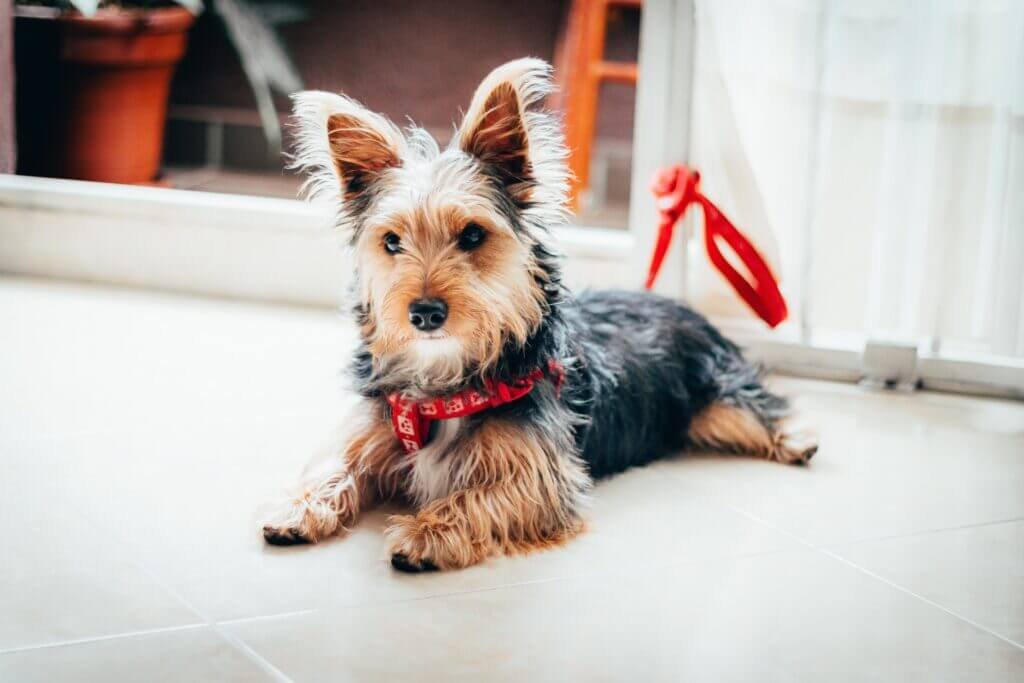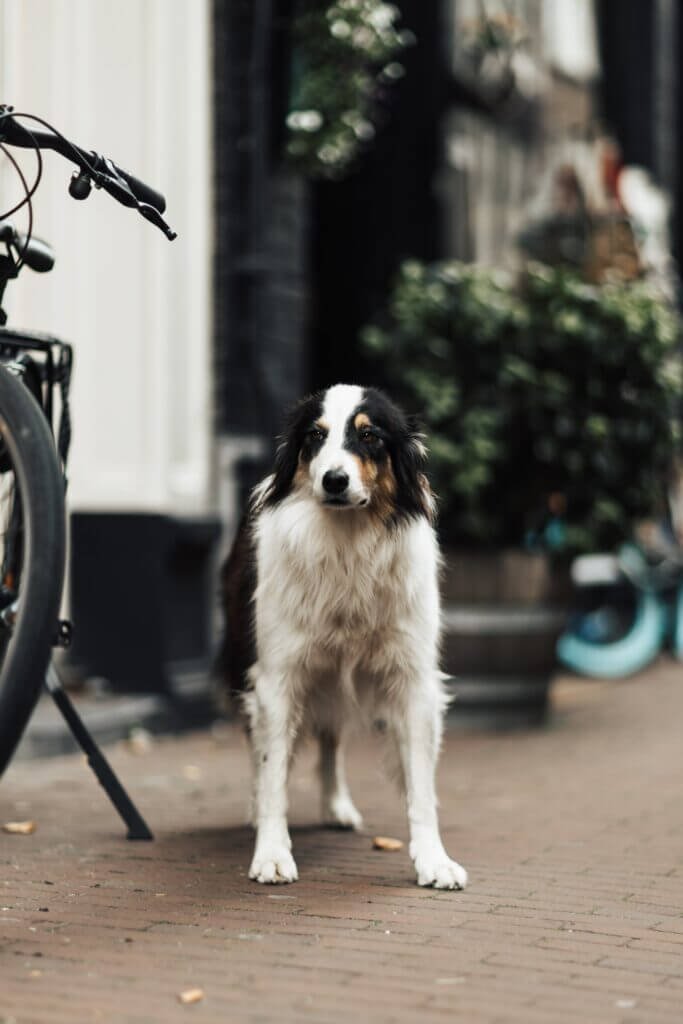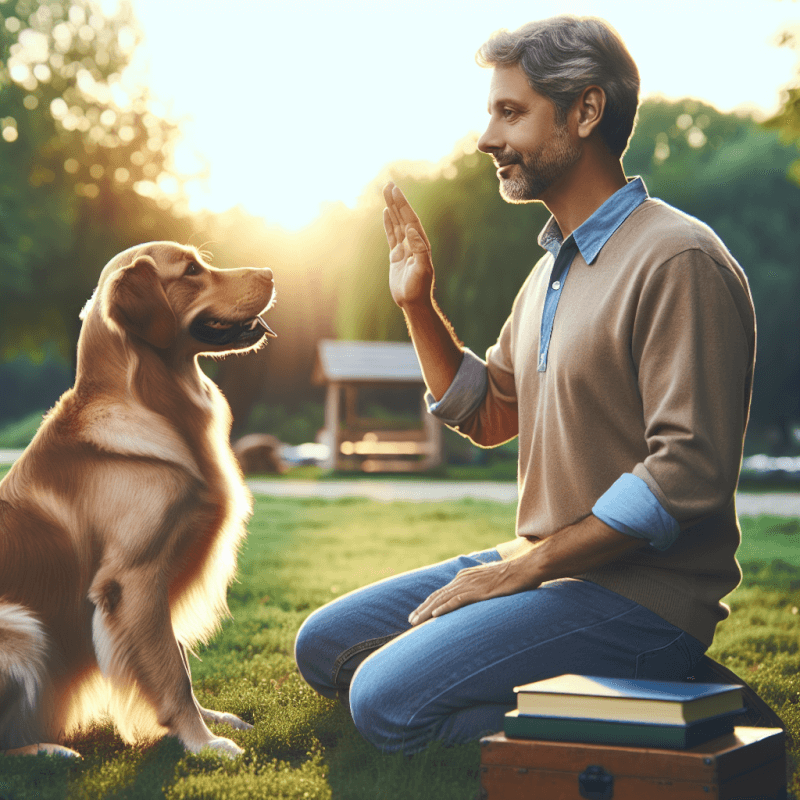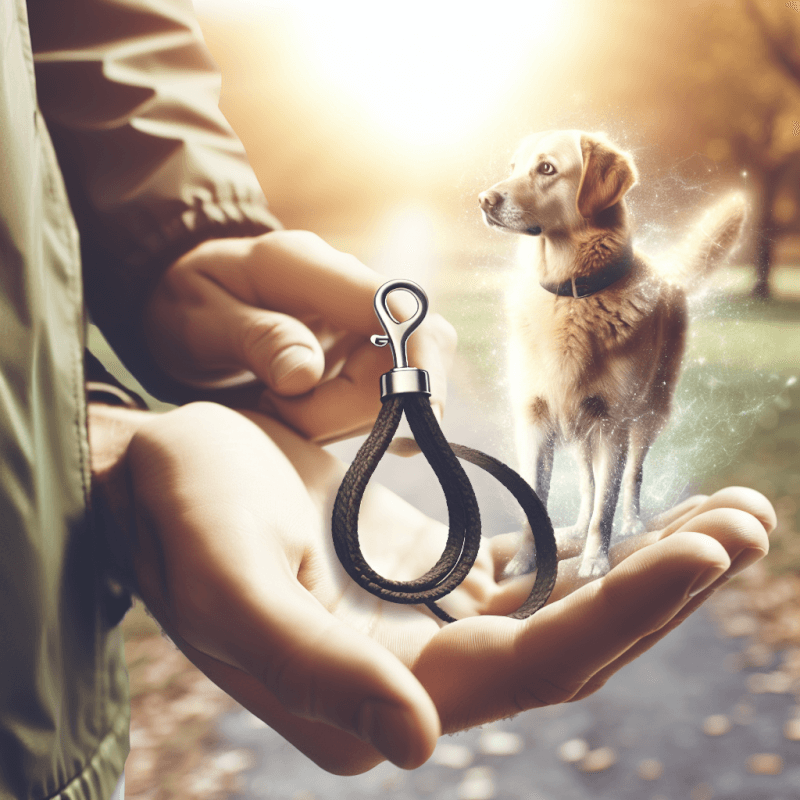Loving and understanding your furry friend is the key to harmonious living, and when it comes to dog training and behavior, it’s no different. Whether you’re a seasoned dog owner or a first-time pup parent, this article will guide you through the ins and outs of dog training and behavior. Discover effective and positive techniques that will not only cultivate obedience but also promote a strong bond between you and your four-legged companion. From basic commands to addressing behavioral issues, explore the fascinating world of dog psychology and embark on a journey of teaching and learning together.
Understanding Dog Behavior
Canine Communication
Understanding how dogs communicate is crucial in building a strong bond and effectively training your furry friend. Canine communication includes various forms such as body language, vocalizations, and facial expressions. By learning to interpret these signals, you can better understand your dog’s needs and emotions. Some common communication cues include tail wagging, ear position, growling, and barking. Taking the time to observe and understand your dog’s communication cues will greatly improve your ability to communicate with them effectively.
Ready for Cat Trivia?
Test your knowledge about cats!

Understanding Body Language
A dog’s body language is their primary means of expressing their feelings and intentions. By closely observing their body language, you can gain insights into their emotions and better respond to their needs. For example, a wagging tail does not always indicate friendliness. A slow, low wag might signify hesitation or caution, while a fast, high wag usually means excitement or happiness. Other important cues include ear position, eye contact, and overall body posture. Taking the time to learn and understand your dog’s body language will significantly enhance your bond and communication with them.
Dog Behavior Problems
Dog behavior problems can arise due to a variety of reasons, such as fear, anxiety, or lack of proper training. These problems can negatively impact your dog’s quality of life and your household’s harmony. Common behavior issues include excessive barking, aggression, separation anxiety, and destructive chewing. It is important to address these problems promptly and with patience. Seek professional help if needed, as they can provide guidance and support in resolving these issues effectively.
Dog Training Basics
Positive Reinforcement
Positive reinforcement is a widely recognized and effective training method that involves rewarding desired behaviors. By reinforcing behaviors you would like to see more of, such as sitting or staying, you encourage your dog to repeat those behaviors in the future. Rewards can include treats, praise, or playtime. It is important to ensure that rewards are given immediately following the desired behavior to reinforce the association. Using positive reinforcement not only strengthens the bond between you and your dog but also helps create a positive and enjoyable training experience.
Obedience Training
Obedience training is essential for a well-behaved and happy dog. It involves teaching your dog basic commands such as “sit,” “stay,” “come,” and “down.” Obedience training provides structure and boundaries for your dog, helping them understand what is expected of them in various situations. Consistency is key in obedience training, as dogs thrive on routine and clear expectations. By establishing a consistent training routine and using positive reinforcement, you can effectively teach your dog obedience commands and build a strong foundation for further training.
Crate Training
Crate training is a valuable tool for both house training and providing a safe space for your dog. When done correctly, crate training can create a den-like environment where your dog feels secure and comfortable. It can also help prevent destructive behaviors and aid in house training by teaching your dog to hold their bladder and bowels. Introduce the crate gradually, using positive reinforcement to associate it with positive experiences. Ensure the crate is appropriately sized and provide your dog with toys and bedding to make it a pleasant and inviting space.
Clicker Training
Clicker training is a popular and effective method that uses a clicker, a small handheld device that makes a distinct clicking sound, to mark desired behaviors. The sound of the clicker serves as a clear and consistent signal to your dog that they have performed the correct behavior. Clicker training allows for precise timing and helps your dog understand which behaviors are being reinforced. By pairing the click sound with a reward, such as a treat, you can shape and reinforce desired behaviors. Clicker training can be used for a wide range of commands and tricks, making it a versatile and positive training technique.

Crucial Commands to Teach Your Dog
Sit
The “sit” command is one of the most fundamental commands to teach your dog. It is not only useful in everyday situations but also serves as the foundation for teaching other commands. To teach your dog to sit, hold a treat close to their nose and slowly move it upwards. As their head follows the treat, their bottom should naturally lower into a seated position. Once they are sitting, praise them and give them the treat. Repeat the process, gradually introducing the verbal cue “sit.” With practice and consistency, your dog will quickly learn to sit on command.
Stay
The “stay” command is crucial for keeping your dog in one place, whether for safety reasons or during obedience training. Start by asking your dog to sit, then hold your hand up in front of them and say “stay” in a firm but gentle tone. Take a step backward and wait a few seconds before returning to your dog. If they remain in a sitting position, praise them and offer a treat. Gradually increase the duration of the stay and practice in different environments, gradually adding distractions. Remember to always release your dog from the stay command with a release word, such as “okay.”
Come
The “come” command is vital for ensuring your dog’s safety and control in various situations. Teaching your dog to come when called can prevent them from running into hazardous situations or straying too far from you. Start in an enclosed space with minimal distractions. Call your dog’s name and say “come” in an enthusiastic and encouraging tone. Reward them with praise and treats when they come to you. Gradually increase the distance and practice in different environments, gradually introducing distractions. Remember to always make coming to you a positive and rewarding experience for your dog.
Down
The “down” command teaches your dog to lie down on command, which can be useful in situations requiring calm behavior or when you want your dog to settle. Start with your dog in a sitting position. Hold a treat close to their nose, then lower it straight down to the ground, between their front paws. As they follow the treat with their nose, their body should naturally lower into a lying down position. Once they are down, praise them and offer a treat. Repeat the process, gradually introducing the verbal cue “down.” Practice in various locations and gradually increase the duration of the down command.
Leave It
The “leave it” command is essential for preventing your dog from picking up or engaging with items that may be harmful or undesirable. Hold a treat in your closed fist and present it to your dog. When they sniff or lick your hand, say “leave it” in a firm tone. Wait for a moment of hesitation and reward them with a different treat from your other hand. Repeat the process, gradually increasing the level of temptation or distraction. With consistency and patience, your dog will learn to understand and respond to the “leave it” command, keeping them safe from potential hazards.
Drop It
The “drop it” command is valuable for getting your dog to release items they have in their mouth, such as toys or inappropriate objects. Start by offering your dog a toy or object they enjoy. Allow them to take hold of it, then present a treat near their nose. As they release the toy to take the treat, say “drop it” in a calm but firm tone. Immediately praise them and offer the treat as a reward. Repeat the process, gradually introducing the verbal cue “drop it” before offering the treat. Practice with different objects, ensuring your dog understands that dropping the item leads to a positive outcome.
Addressing Behavioral Issues
Barking
Excessive barking can be a common issue among dogs and can stem from factors such as fear, boredom, or a desire for attention. To address excessive barking, it is essential to determine the underlying cause and address it appropriately. If your dog barks out of fear, creating a safe and comforting environment with positive experiences can help reduce their anxiety. If boredom is the cause, provide mental and physical stimulation through interactive toys, puzzles, and regular exercise. Consistent obedience training, including teaching a “quiet” command, can also help manage and reduce excessive barking.
Separation Anxiety
Separation anxiety is a condition in which dogs experience distress when separated from their owners or left alone. This behavior can result in destructive behaviors or excessive vocalizations. To help alleviate separation anxiety, gradually desensitize your dog to your departures by practicing short periods of separation and gradually increasing the duration over time. Provide them with engaging and interactive toys, as well as a safe, comfortable space in which to stay. Consistency, patience, and positive reinforcement can help your dog feel more secure and confident during periods of separation.
Aggression
Aggression in dogs can be a concerning behavior that poses risks to both humans and other animals. Aggression can result from fear, territoriality, resource guarding, or lack of socialization. It is crucial to identify the triggers and underlying causes of aggression and seek professional help from a qualified dog behaviorist or trainer. They can provide guidance and develop a tailored plan to address aggression through behavior modification techniques. It is essential to prioritize the safety of all individuals involved and work towards resolving the underlying issues causing aggression.

House Training Your Dog
Establishing a Routine
Establishing a consistent routine is key in house training your dog. Create a regular schedule for feeding, potty breaks, and playtime. This routine will help your dog anticipate when they will have the opportunity to relieve themselves outside. Take your dog outside on a leash to the same spot each time and give them a specific command, such as “go potty.” Be patient and wait for them to eliminate. When they do, praise them enthusiastically and offer a treat. Consistency, positive reinforcement, and a regular schedule will help your dog understand where and when it is appropriate to go potty.
Crate Training
Crate training can be a valuable tool in house training your dog. Dogs have a natural instinct to keep their sleeping area clean, so using a properly sized crate can help prevent accidents in the house. Introduce the crate gradually, providing positive associations with treats and toys. Use the crate as a confinement area when you cannot directly supervise your dog, but remember to give them regular potty breaks. Do not use the crate as a punishment, as it should be a safe and comfortable space for your dog. Gradually increase the amount of time your dog spends in the crate, ensuring they have positive experiences inside.
Positive Reinforcement
Positive reinforcement plays an important role in house training your dog. When your dog eliminates in the desired area, provide immediate praise and rewards. Treats, verbal praise, and playtime can all serve as positive reinforcement. Avoid punishing your dog for accidents, as this can create fear and anxiety surrounding potty training. Instead, focus on rewarding and reinforcing desired behaviors. Consistency, patience, and positive reinforcement will help your dog learn quickly and establish good habits when it comes to house training.
Teaching Basic Manners
Leash Walking
Teaching your dog to walk politely on a leash is essential for both their safety and your enjoyment during walks. Start by introducing your dog to the leash and collar or harness in a positive and calm manner. Attach the leash and allow them to become comfortable with the sensation of being guided. Begin walking and reward your dog for walking by your side, using treats or verbal praise. If your dog pulls on the leash, stop walking and wait for them to relax and return to your side. Resume walking when they are calm and reiterate the rewards for walking politely. Consistency and positive reinforcement will help your dog develop good leash manners over time.
Jumping
Jumping up on people is a behavior many dogs exhibit out of excitement or as a form of greeting. While it may be cute when they are small puppies, it can become problematic as they grow older. To discourage jumping, consistently ignore and turn away from your dog when they jump up, denying them attention. Teach an alternative behavior, such as sitting, that you can reward and reinforce instead. When your dog remains calm and keeps all four paws on the ground, provide praise and rewards. Consistency and patience are key in addressing jumping behavior and establishing polite greetings.
Chewing
Chewing is a natural behavior for dogs, but it can become destructive when they target inappropriate items such as furniture or personal belongings. To redirect your dog’s chewing behavior, provide them with a variety of appropriate chew toys. Encourage them to chew on these toys by praising and rewarding them when they do so. Supervise your dog closely, especially in the early stages of training, to prevent access to inappropriate items. If you catch your dog chewing on something they shouldn’t, redirect their attention to a chew toy and praise them for choosing the correct item. With consistency and appropriate outlets for chewing, your dog will learn which items are acceptable to chew on.
Digging
Digging is a natural instinct for dogs, but it can cause frustration for owners when it leads to destroyed gardens or yard areas. To deter excessive digging, provide your dog with designated digging areas, such as a sandbox or specific part of the yard. Encourage them to dig in these areas by burying toys or treats for them to find. If you catch your dog digging in other areas, redirect their attention to the designated digging spot and praise them for digging there. Consistency and positive reinforcement will help your dog understand where it is appropriate to dig and reduce unwanted digging behaviors.

Understanding Puppy Behavior
Socialization
Socialization is a crucial aspect of raising a well-rounded and well-behaved puppy. It involves exposing your puppy to various people, animals, environments, and experiences to create positive associations and reduce fear or anxiety in unfamiliar situations. Start socializing early, beginning with controlled interactions with trusted friends, family members, and other vaccinated dogs. Gradually expose your puppy to new environments, sights, sounds, and experiences in a positive and controlled manner. Strive to create positive associations through treats, praise, and play. Proper socialization during the critical early months of a puppy’s life sets a strong foundation for their future behavior.
Bite Inhibition
Puppies explore the world with their mouths, and it is natural for them to nip or bite during play. However, it is essential to teach them appropriate bite inhibition to prevent unintentional harm as they grow older. When your puppy bites too hard during play, give a high-pitched yelp or say “ouch” to signal that the bite was too rough. Immediately stop play and ignore your puppy for a short period. This teaches them that biting too hard leads to the end of playtime. Reward gentle play and redirect biting to appropriate chew toys. With consistent reinforcement, your puppy will learn to control the intensity of their bites.
Developmental Stages
Puppies go through various developmental stages as they grow, each with its unique challenges and opportunities for learning. Understanding these stages can help you navigate the ups and downs of puppyhood. The neonatal stage occurs from birth to two weeks, during which puppies are entirely reliant on their mother for care. The transitional stage happens between two to four weeks, as puppies begin to explore their surroundings and develop social skills. From four to sixteen weeks, puppies enter the socialization period, where exposure to new experiences is crucial. Finally, the juvenile stage lasts from sixteen weeks to sexual maturity, during which puppies continue to learn and establish behavioral patterns. Patience, consistency, and positive reinforcement during each stage will contribute to a well-adjusted and well-behaved adult dog.
Clicker Training
Introduction to Clicker Training
Clicker training is a positive and effective training technique that uses a handheld clicker to mark desired behaviors. The distinct click sound helps bridge the gap between the behavior and the reward that follows. Clicker training allows for accurate and precise timing, which is essential in training complex behaviors and tricks. It is a versatile training method that can be used for obedience training, trick training, and behavior modification. Clicker training creates a positive and enjoyable training experience for both you and your dog, promoting clear and effective communication.
How to Use a Clicker
To use a clicker, first establish a clear association between the click sound and a reward. Begin in a quiet and calm environment. Click the clicker and immediately follow it with a tasty treat or a favorite toy. Repeat this process several times, ensuring your dog makes a positive connection between the click and the reward. Once your dog understands that the click signifies a reward, you can begin using the clicker to mark and reinforce desired behaviors. Click as your dog performs the desired behavior, then promptly reward them with a treat or praise. Consistency and precise timing are essential in clicker training.
Getting Started with Clicker Training
To get started with clicker training, identify a behavior or command you would like to train your dog. Break down the behavior into small, manageable steps. Click and reward your dog for approximations of the behavior, gradually shaping it into the desired behavior. For example, if you want to teach your dog to “sit,” you can click and reward them when they begin to lower their hind end, then progress to only clicking and rewarding when they fully sit. Remember to keep training sessions short and positive, ending on a high note. With consistency, patience, and proper reinforcement, your dog will quickly learn new behaviors through clicker training.

Training for Specific Activities
Agility
Agility training involves guiding your dog through an obstacle course, including jumps, tunnels, weave poles, and more. This activity not only provides physical exercise but also enhances your dog’s mental stimulation and focus. Begin with basic foundation training, such as teaching your dog to follow your commands and navigate simple obstacles. Gradually increase the complexity of the course and introduce new obstacles. Positive reinforcement, consistency, and clear communication with your dog are essential in agility training. With practice and dedication, you and your dog can enjoy the excitement and teamwork of agility training.
Search and Rescue
Search and rescue training involves teaching your dog to locate and signal the presence of lost or missing persons. This specialized training requires a solid foundation in obedience and scent detection. Start by building your dog’s confidence and enthusiasm for tracking scents. Introduce them to various scents and gradually increase the difficulty of scent trails. Teach them to follow a track or trail while responding to your commands. Search and rescue training requires commitment, time, and professional guidance. Engaging in this activity can provide a fulfilling and rewarding experience for both you and your dog.
Therapy Work
Therapy work involves training your dog to provide comfort and companionship to individuals in various settings. Therapy dogs visit hospitals, nursing homes, schools, and other facilities to bring joy and support to people in need. A therapy dog must possess good manners, be calm and well-behaved, and enjoy interacting with people. Basic obedience training is essential, as well as exposure to different environments, sounds, and handling. Your dog must also adhere to specific behavioral standards and pass a therapy dog certification test. Engaging in therapy work can be a rewarding and impactful way to share the love and companionship of your dog with others.
Advanced Training Techniques
Target Training
Target training involves teaching your dog to touch a specified object, such as your hand or a target stick, with a specific body part, usually their nose or paw. This technique can be used to teach complex behaviors or tricks and facilitates communication between you and your dog. Start by presenting the target and rewarding your dog when they touch it with the desired body part. Gradually increase the distance or complexity of the targets and introduce verbal cues. Target training allows for precise control and shaping of behaviors, making it a valuable technique in advanced training.
Shaping Behavior
Shaping behavior involves rewarding successive approximations of a desired behavior until the final behavior is achieved. This technique is particularly useful for teaching complex behaviors that cannot be easily captured or lured. Break down the behavior into small steps and reward your dog for each step that brings them closer to the desired behavior. For example, if you want to teach your dog to roll over, you can reward them for lying on their side, then for rolling partially, and finally for completing a full roll. Shaping behavior requires patience, consistency, and accurate timing to reinforce and shape the desired behaviors effectively.
Proofing Commands
Proofing commands involves practicing and reinforcing obedience commands in various environments and with increasing distractions. This technique ensures that your dog understands and responds to commands consistently, regardless of the surrounding circumstances. Start in a controlled environment with minimal distractions and gradually introduce distractions such as toys, food, or other people and animals. Reinforce and reward your dog for successfully following commands amidst distractions. Increase the difficulty by practicing in different locations and gradually exposing your dog to more challenging distractions. Consistency and positive reinforcement will help your dog confidently respond to commands in any situation.
By understanding and applying these dog training techniques, you can establish a strong foundation of obedience, address behavioral issues, and nurture a happy, well-behaved dog. Remember to always use positive reinforcement, be patient, and tailor your training approach to your dog’s individual personality and needs. With consistent training, clear communication, and love, you and your dog can build a lifelong bond and enjoy a harmonious relationship.



